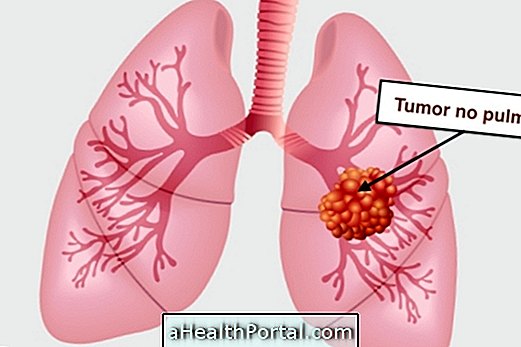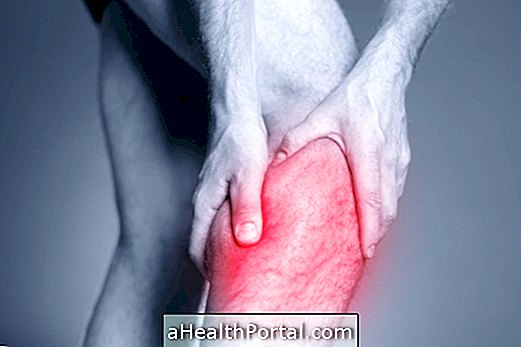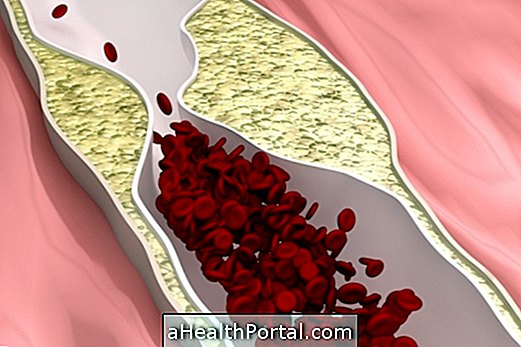The neck lump may be caused by an inflamed tongue, a thyroid nodule, or a contracture in the neck. These lumps may be painless or cause pain and discomfort, and may arise in various regions of the neck such as the nape of the neck, behind the ears or in the anterior region of the neck, for example.
So, to get an idea of the possible causes that can lead to the appearance of a lump in the neck, here are some situations that may be at the origin of the problem:
5 Causes Causing Neck Lump
1. Languages
When the lymph nodes are inflamed, they form glands that appear as a lump. These lumps may arise on the back of the neck or on the side behind the ear, depending on the swollen lymph, causing pain and discomfort to the touch.
Tears may be caused by infections or inflammations such as inflammation in a tooth, flu, tonsillitis, or otitis, for example, and do not require specific treatment, as they end up happening when the cause of the problem is treated. Therefore, to treat the tongue you should consult your doctor so that he can identify and treat what is causing inflammation in the lymph nodes and bet on rest and hydration. Learn more about this neck lump problem.

However, if the tongue does not diminish in size or if you stop feeling pain, you should see your doctor because it may be a symptom of a more serious problem such as Hodgkin's lymphoma or sarcoidosis.
2. Nodule in thyroid
When a lump appears in the anterior region of the neck, this may indicate the presence of a thyroid nodule, which should be evaluated by an endocrinologist. Generally thyroid nodules do not cause symptoms, but in some cases they can cause sore throat, swelling in the neck or difficulty breathing and swallowing.
When these nodules arise, it is necessary to consult the endocrinologist for diagnostic tests such as biopsy to identify if the nodule is benign or if there is a risk of cancer. See which exams can be indicated by the doctor in Neck lump in the neck can be Nodule in the Thyroid.
If the nodule is benign, treatment may not be necessary, and monitoring is recommended only by performing ultrasonography and annual blood tests. On the other hand, if there is a risk of cancer, the doctor will initiate the appropriate treatment that may include the taking of medicines such as levothyroxine or radioactive iodine, and surgery may also be necessary to remove the nodule.
3. Neck contracture
Contractures in the neck can cause a painful lump to appear on the back of the neck and arise when the muscle contracts incorrectly and can not return to its normal state when at rest. Usually these types of lumps are hard and accompanied by pain and discomfort in the affected region, and there is also a limitation in movements. Here's how to identify a muscle contracture by clicking here.
To treat a muscular contraction in the neck region, it is recommended to take a warm water bath, apply warm compresses to the painful region, massage the area with anti-inflammatory ointments and do stretches that perfectly flatten the neck. In addition, using remedies to relax muscles like Miosan or Dorflex may also be beneficial for treating contracture.
When contractions do not go away, worsen or when pain persists for more than 7 days, it is recommended to consult a physician or physical therapist to treat the problem.

Sebaceous cyst
Another possible cause that can lead to the appearance of a lump in the neck are the sebaceous cysts, which form on the skin due to the accumulation of sebum.
This type of lumps or cysts usually measure a few centimeters and do not cause pain, but when they are inflamed they cause redness, pain and temperature increase in the area where they arise. The treatment of these lumps needs to be done by a dermatologist, who may indicate that a minor surgery is performed to remove the cyst. Learn more about treatment of Sebaceous Cyst by clicking here.
5. Cancer in the Neck
In more severe cases, the appearance of a lump in the neck may indicate the presence of cancer and in these cases the lump is accompanied by other symptoms such as hoarseness, difficulty swallowing, sore throat, frequent choking, weight loss and malaise general.
In the presence of these symptoms it is recommended that you consult your doctor as soon as possible so that the doctor can make the diagnosis and indicate the best treatment.






















